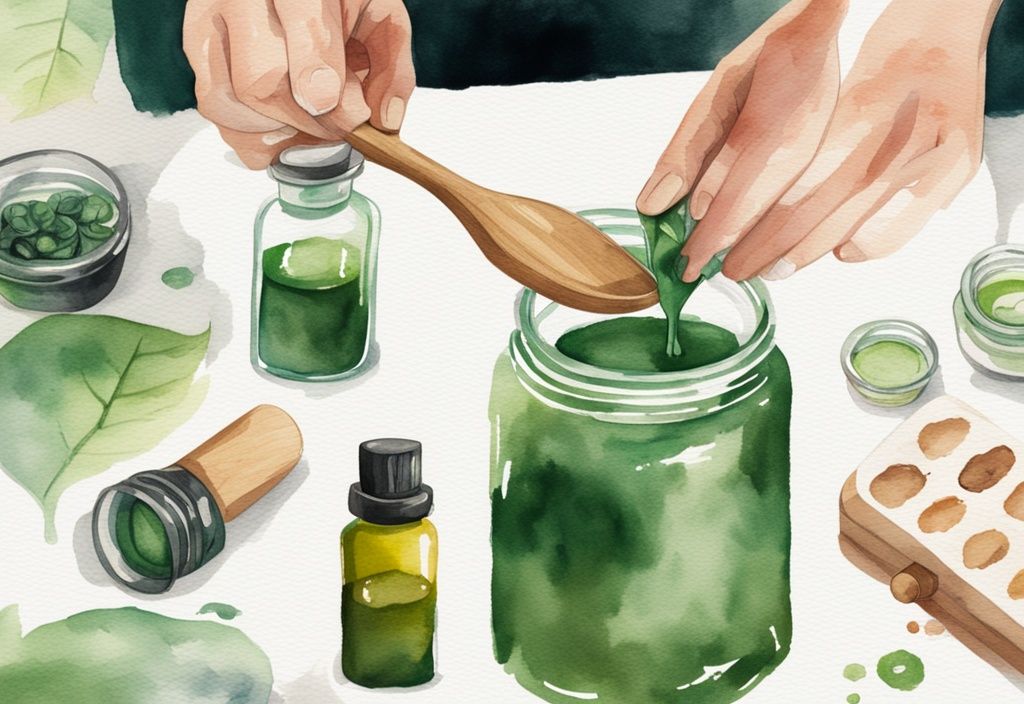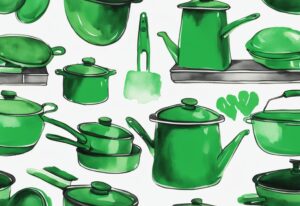DIY Guide: Easy Steps on How to Make Non Toxic Candles Safely
Ever catch a whiff of something artificial when lighting a candle? It’s possible you’re inhaling more than just the sweet scent. As a firm believer in natural and clean alternatives, I was alarmed to discover many conventional candles can release harmful toxins into our homes. But here’s the good news – we can easily sidestep this problem. Today, we’re going to explore how to create our own non-toxic candles, using nothing but natural and safe ingredients. With my simple-to-follow guide, you can enjoy the soothing, gently fragrant ambiance that only handmade candles can provide, without compromising on the health of your home. Let’s transform our space together, one candle at a time.
Understanding the Benefits of Non-Toxic Candles
Making non-toxic candles at home is not only a creative and enjoyable activity, but it also offers several health and environmental benefits. Unlike many conventional scented candles, which often contain synthetic fragrances and paraffin wax, non-toxic candles harness the power of natural ingredients, ensuring a safer and cleaner burn. These candles significantly reduce the release of harmful airborne substances, contributing to a healthier indoor environment. This shift towards non-toxic candle making is particularly important for those concerned about indoor air quality and the potential health risks associated with traditional candles.
What Makes Most Candles Toxic?
Traditional candles often contain paraffin wax, a by-product of petroleum refining. When burned, paraffin wax releases a number of harmful chemicals, including benzene and ketones, which are known carcinogens. For more information on the potential risks associated with candles, check out this article on Are Candles Bad for You?. Additionally, synthetic fragrances, commonly used to scent conventional candles, may contain phthalates and other toxic substances that can aggravate respiratory issues and contribute to indoor air pollution. Another concern is the source of the candle wick. Some traditional candle wicks have been found to contain lead, which, when burned, can emit toxic fumes. These elements all contribute to the overall toxicity of many commercially available candles.
By using natural waxes and pure essential oils, non-toxic candles eliminate the health risks associated with synthetic materials. Natural waxes such as soy, beeswax, and coconut wax produce clean, soot-free burns. When paired with natural wicks and essential oils, the overall candle-making process becomes both safer and more eco-friendly. This conscious choice enhances indoor air quality and aligns with a sustainable lifestyle, proving that the switch to non-toxic candles is a win for both personal health and the environment.
Materials You Need for Creating Non-Toxic Candles
Creating non-toxic candles involves selecting the right materials to ensure safety, sustainability, and performance. Here’s a look at the essentials you need to get started.
Natural Waxes: Soy, Beeswax, and Coconut
When learning how to make non toxic candles, choosing the right type of wax is fundamental. Soy wax is a popular choice because it burns cleanly, is non-toxic, and comes from a renewable resource. It’s a versatile option for those starting their candle-making journey.
Beeswax, another excellent choice, burns slower than soy wax and emits minimal smoke, ensuring a longer-lasting candle. This means you’ll enjoy your handmade creations for even longer.
Finally, coconut wax stands out for its sustainability and eco-friendliness, making it an economical yet high-quality option. If you’re wondering about other eco-friendly products, you might ask, is herbal essence good for the environment and your health?
Plus, it has a fantastic scent throw!
Choosing Safe, Natural Wicks
For non-toxic candles, the type of wick you choose can greatly impact the candle’s safety and performance. Opt for wicks made from natural materials like cotton, wood, or hemp. This ensures cleaner burning and avoids releasing harmful toxins into your home.
The wick size should be matched with the jar size to promote an even burn, preventing tunneling or uneven melting. Always avoid wicks with a lead core, as they can release toxic particles when burned, counteracting your efforts to create a non-toxic product.
Finding Suitable Containers for Your Candles
Choosing the right container is crucial for safety and functionality when learning how to make non toxic candles. Small jars or containers are ideal as they help prevent overheating and breaking. Reusing containers from past non-toxic candles is also a sustainable approach, aligning with the eco-friendly ethos of non-toxic candle making.

Always ensure the containers you select are heat-resistant to withstand the high temperatures of melted wax. This precaution extends the life of your candles and keeps your home safe.
The Role of Essential Oils in Making Scented Candles
Essential oils are key to infusing your candles with natural, pleasant scents. When making non-toxic candles, it is vital to use pure essential oils free from synthetic fragrances and perfumes to maintain the candle’s non-toxic nature.
High-quality essential oils not only ensure maximum scent throw but also enhance safety, making them an indispensable part of the candle-making process. You’ll love the natural aromas that fill your space!
Your Step-by-Step Guide to Making Non-Toxic Candles
Setting Up Your Workspace
When learning how to make non-toxic candles, the first step is to set up a secure and clean workspace. Ensure the area is well-ventilated to avoid inhaling any fumes during the process. Gather all your materials and tools, including natural wax, natural wicks, containers, and essential oils. Having everything within reach will streamline the process and minimize disruptions.
Selecting and Placing Your Wick
A crucial step in how to make non-toxic candles is selecting and properly placing your wick. Choose wicks made from cotton, wood, or hemp to ensure safety and an even burn. Secure the wick to the bottom of your container using wick stickers, a glue gun, tape, or a small amount of melted wax. Once anchored, use rods, pencils, chopsticks, or straws to keep the wick centered while you pour the wax. This helps ensure an even burn in your finished candle.
Methods to Melt the Wax
There are various methods for melting wax when learning how to make non-toxic candles. The double boiler method is popular for its simplicity and effectiveness. Alternatively, a crock pot can be used to melt the wax; for easier cleanup, consider adding a crock pot liner. Both methods allow for a controlled melting process, reducing the risk of overheating.
Adding Essential Oils to Your Wax
Incorporating essential oils is a key step in making your non-toxic candles aromatic. Once the wax is melted, let it cool slightly to preserve the integrity of the essential oils. To achieve the right scent strength, typically use 1 ounce of essential oil per pound of wax. This ratio ensures a balanced fragrance without compromising the candle’s efficiency and safety.
How to Pour Wax Without Creating a Mess
Pouring wax can be a messy endeavor, but with the right technique, it doesn’t have to be. Use a ladle to carefully transfer the melted wax into your containers. Pour slowly and steadily to avoid spills and ensure the wick stays centered. This attention to detail will result in a cleaner finish and a better-performing candle.
Letting the Candles Cool and Set
Once poured, allow your candles to cool and set completely. This step in how to make non-toxic candles is crucial for achieving a smooth, solid surface. Ensure they are left in an undisturbed and clean area during this cooling period to avoid any dust or debris from marring the surface.
Cutting the Wicks to Proper Length
After the candles have fully set, trim the wicks to about ¼ inch. This promotes an even burn and helps prevent excessive soot production. Proper wick length is key to ensuring your non-toxic candles burn cleanly and efficiently, providing the best experience for the user.
Optimize the content with the following guidelines:
The content should be written by a fictional persona, to make it sound humanized. Adapt the writing style to match the persona’s perspective and make the content sound human-like: Olivia Green, the heartfelt voice behind nontoxicways.com, writes with an engaging blend of personal anecdotes and evidence-based insights. Her style mirrors an intimate conversation, punctuated with warmth and empathy. Olivia’s writing is characterized by simplicity and clarity, ensuring even complex concepts feel accessible. She often uses first-person narratives, sharing her own experiences and transformations, which fosters a deep connection with readers. Olivia’s tone is encouraging and motivational, exuding genuine care for her audience’s well-being. She peppers her articles with practical tips and actionable advice, making the journey to non-toxic living seem attainable and rewarding. Her language exudes passion and authenticity, always highlighting the intertwined benefits to both personal health and environmental sustainability. Readers are left feeling both informed and inspired, confident in taking the next steps towards a healthier lifestyle.
Ensure that new paragraphs are being used regularly, so the content is easier to read.
Ensure heterogeneous sentence length.
In case an H2 has no content: Provide the H2 heading with content which introduces what is being covered in its subheadings. Don’t greet the reader or talk about yourself in the H2 introduction.

Use “Du” instead of “Sie” when talking to the reader.
Use HTML format for all content creation like for example: ,
,
- ,
- , etc.
Only optimize the Content, do not change anything else.
Do not add “Optimized Content:” in front of the optimized content.
Do not greet the reader or introduce yourself.
Project Details:
Project: Nontoxicways.com is a blog dedicated to non-toxic living, offering research-backed insights and practical tips for choosing safe products and creating healthier home environments, empowering readers to make informed choices for their health and the planet. Language: English.Important: Do not copy these guidelines into the output. Just rework the given Content with the mentioned guidelines.
Personalizing Your Non-Toxic Candles
Customization is where candle-making becomes truly rewarding. Let’s dive into some creative ways to make your non-toxic candles stand out while keeping them safe and sustainable.
How to Add Organic Items for a Unique Touch
Enhance the aesthetics and aroma of your non-toxic candles by incorporating organic items. I remember the first time I experimented with dried lavender and rose petals—it was a game-changer!
Simply add dried plant clippings, such as lavender or aromatic herbs like rosemary, into the wax before it hardens. Feel free to toss in items like coffee beans for a unique twist. These additions not only provide a decorative element but also contribute a subtle, natural fragrance.
This technique helps infuse your space with an earthy, welcoming ambiance while ensuring your candles remain free from harmful chemicals. I found that the natural scents slowly blend with the wax, releasing their essence as the candle burns, creating a nurturing and inviting atmosphere.
Using Natural Dyes for Colorful Candles
Make your non-toxic candles vibrant and visually appealing by using natural dyes derived from plants or spices. Experimenting with colors can be a fun part of the process. Turmeric, for instance, gives a lovely golden hue, while beetroot powder creates a rich red shade.
I once tried spirulina for a calming green, and the results were absolutely stunning. Before committing to a large batch, test the dye in a small amount of melted wax to achieve your desired color intensity. This way, you’ll end up with perfectly hued candles every time.
This method not only keeps your candles non-toxic but also adds a personalized, artistic touch to your creations. You’ll find that the natural dyes impart a soft, charming aesthetic to your candles, elevating them from simple wax-and-wick to beautiful home decor pieces.
Using Personalized Containers for a Special Touch
The container you choose for your candle can significantly impact both its aesthetic and sustainability. Years back, I started collecting quaint teacups and vintage glassware for my candles. These unique jars or tins reflect your personal style and can be a delightful talking point.
Reusing containers from old non-toxic candles or household items not only adds a personal and unique flair but also aligns with eco-friendly practices. Everyday items like repurposed mason jars or charming old cups can serve as perfect candle holders.

This thoughtful approach makes your candle-making process even more rewarding and environmentally conscious. Plus, it feels incredibly satisfying to upcycle and breathe new life into items that might otherwise be discarded.
Each personalized container tells a story, turning your non-toxic candle into a unique piece that both you and your friends will cherish. So, the next time you make candles, look around your home for potential containers—you might be surprised at what you find!
Important Safety Tips When Making Non-Toxic Candles
Avoiding Wax Overheating Hazards
Proper temperature control is crucial when learning how to make non toxic candles. Overheating wax can be dangerous, leading to fires. Always keep the wax temperature below its flashpoint to avoid this hazard. Regularly using a thermometer to monitor the wax temperature is essential. This practice ensures that you maintain a safe environment while achieving the desired consistency for your wax.
Making Your Workspace Safe
A well-organized and ventilated workspace is essential for safe candle making. Ensure your workspace is clutter-free to minimize the risk of spills and accidents. Proper ventilation will help disperse any fumes generated during the process, maintaining air quality. Additionally, keeping a fire extinguisher within easy reach is a prudent measure to quickly address any unforeseen fire hazards. These practices guarantee a secure environment while learning how to make non toxic candles.
Why Supervision is Key in DIY Candle Making
Continuous supervision is a non-negotiable aspect when learning how to make non toxic candles. Melting wax should never be left unattended as it can quickly become a fire hazard. By supervising the entire process attentively, you can promptly address any issues that arise, such as overheating or accidental spills. This vigilant approach not only ensures safety but also enhances the quality and consistency of your homemade non-toxic candles.
Proper Usage and Care for Your Handmade Non-Toxic Candles
Ensuring an Even Burn on Your Maiden Light
When it comes to lighting your handmade non-toxic candles for the first time, allowing the entire surface to melt is essential. This practice helps establish a strong melting memory and prevents the dreaded “tunnel effect,” where the wax on the sides remains unmelted, leading to a shorter lifespan for your candle.
Aim for a full melt pool that reaches the edges of the container. This approach not only ensures an even burn but also enhances the longevity of your candles. By setting this consistent pattern from the maiden light, you’re paving the way for many hours of soothing candlelight.
How to Extend the Lifespan of Your Candle
Extending the lifespan of your non-toxic candles involves a few simple but crucial steps. Always keep the wicks trimmed to about ¼ inch. This small detail can make a big difference—it prevents large flames that cause the candle to burn faster and create more soot.
Additionally, try to avoid burning your candles in drafty areas. Air currents can lead to uneven burning, causing frustration and wasted wax. By taking these steps, you can ensure a cleaner, more efficient burn that makes the most out of your handmade creations. Remember, a well-maintained wick is key to longevity and an optimal burn.
Maintaining Fragrance and Minimizing Soot
Preserving the fragrance and minimizing soot in your handmade non-toxic candles is all about proper storage and regular maintenance. Store your candles in a cool, dry place to retain the integrity of the wax and the essential oils that provide their delightful scents.
When your candles aren’t in use, covering them with lids or other coverings can help maintain their fragrance and protect them from dust. Before each burn, trim the wicks to ¼ inch. This simple act minimizes soot production and ensures a bright, steady flame.
By following these care tips, your handmade non-toxic candles will remain burning clean and fragrant, offering a touch of natural comfort to your home. With every burn, you’re participating in a journey towards a healthier and more sustainable lifestyle—one candle at a time.
FAQs about How to Make Non-Toxic Candles
Why use natural waxes like soy, beeswax, and coconut?
Natural waxes are a wonderful choice because they are non-toxic, renewable, and often produce less soot than conventional paraffin wax. This makes them environmentally friendly and fosters a healthier indoor air quality. Personally, I’ve found that candles made from soy, beeswax, and coconut burn cleaner and provide a much more pleasant experience in my home.
How can I ensure my candle wick is perfectly centered?
From my own candle-making journey, I’ve learned that using centering devices like rods, pencils, chopsticks, or straws can be a game-changer. These simple tools help maintain the wick’s position while pouring the wax, ensuring an even burn and helping to prevent those frustrating tunneling issues. Taking this small step can make a big difference in the quality of your non-toxic candles.
Are fragrance oils a safe alternative to essential oils?
While some fragrance oils can be safe, it’s crucial to ensure they are free from phthalates and other synthetic additives. Always check the labels to confirm they’re formulated for non-toxic use before incorporating them into your candles. Personally, I’ve found a few reputable brands that prioritize natural ingredients, and they smell divine without compromising on safety.
Why is a 48-hour cure time recommended?
A 48-hour cure time is recommended because it allows the wax and scent to set properly. This resting period helps achieve optimal burning quality and the best fragrance throw for your non-toxic candles. Trust me, waiting those extra hours can make a noticeable difference in how your candle performs, truly enhancing your candle-making experience.
What should I do if my candle starts to burn unevenly?
If your candle begins to burn unevenly, try trimming the wick to ¼ inch and allowing the wax to cool and solidify before relighting it. Additionally, ensure the candle burns in a draft-free area to promote even melting and avoid tunneling. These small adjustments can bring your candle back to an even burn, enhancing both its appearance and performance.

Hi, I’m Olivia Green, the voice behind nontoxicways.com. I’m passionate about helping you make the shift to a healthier, non-toxic lifestyle without feeling overwhelmed. I love sharing my personal journey, from small changes to big transformations, along with practical tips that make it all feel doable. My goal is to inspire and guide you toward a lifestyle that benefits both your well-being and the planet. Let’s take this journey together, one simple step at a time!














Post Comment